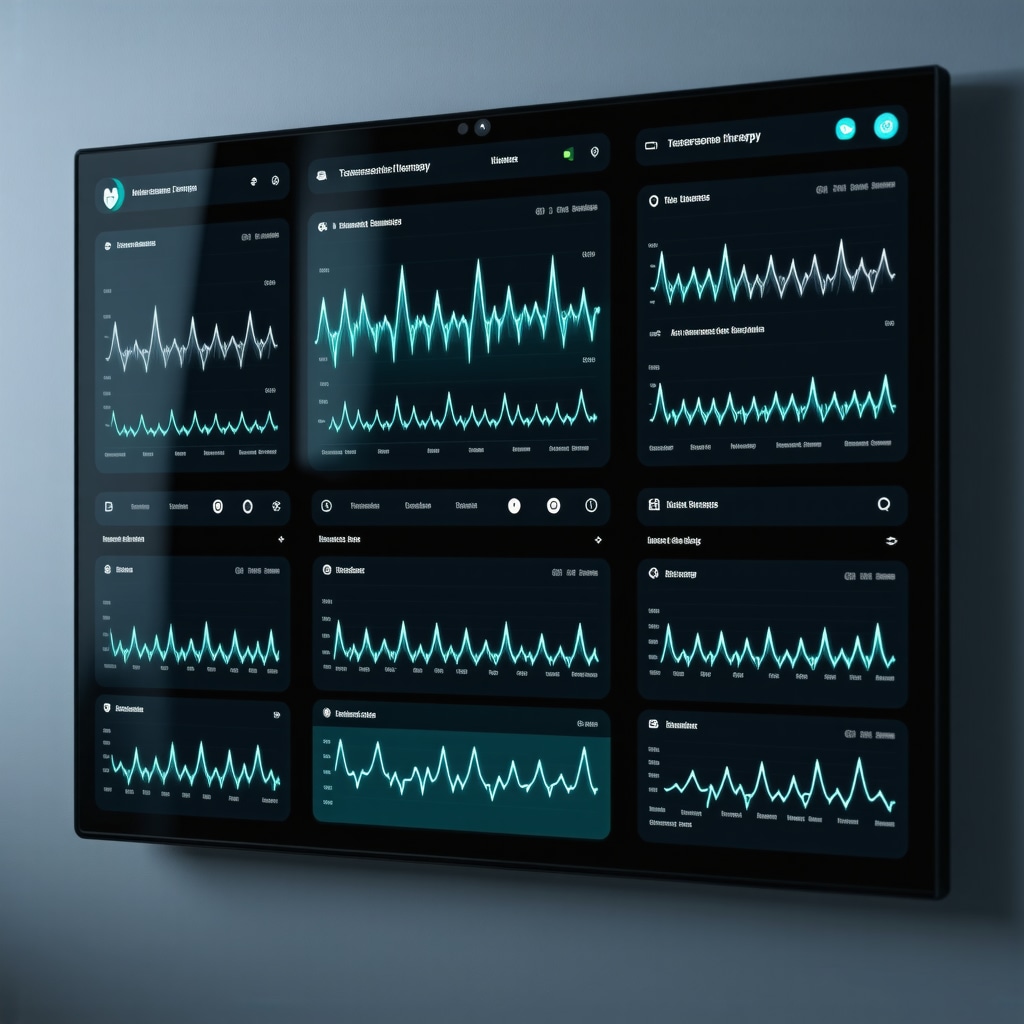Unlocking Vitality: Understanding Low Testosterone and Its Impact in San Diego
Low testosterone, often overlooked, profoundly affects men’s physical health, mood, and overall vitality. In San Diego’s active and health-conscious community, recognizing symptoms such as fatigue, decreased muscle mass, and diminished libido is the first step toward reclaiming well-being. With a range of natural and medical options available, personalized approaches to safe low testosterone treatment in San Diego are increasingly accessible to men seeking effective, evidence-based care.
Nature’s Role: Harnessing San Diego’s Lifestyle for Testosterone Optimization
Natural strategies play a pivotal role in managing low testosterone safely. San Diego’s favorable climate encourages outdoor activities that boost hormonal health—regular exercise, especially resistance training, stimulates testosterone production naturally. Nutritional optimization, focusing on zinc-rich foods, healthy fats, and vitamin D, further supports endocrine function. Stress reduction techniques such as mindfulness and adequate sleep are crucial, as chronic stress elevates cortisol, which can suppress testosterone.
Incorporating these lifestyle adaptations not only enhances hormone balance but also aligns with holistic health trends embraced by the local community. For comprehensive guidance, the article San Diego’s Best Natural Testosterone Boosting Strategies (2025) offers an insightful roadmap tailored to regional needs.
Medical Innovations: Tailored Therapeutics for Low Testosterone in San Diego
When natural methods require supplementation, medical treatments provide precise and safe options. Testosterone replacement therapy (TRT) in forms such as gels, injections, or bioidentical hormone pellet therapy presents effective solutions backed by clinical expertise. Pellet therapy, in particular, offers steady hormone release and convenience, minimizing fluctuations and side effects. San Diego clinics specializing in hormone pellet therapy have refined protocols to maximize safety and efficacy.
Emerging research underscores the importance of individualized dosing and monitoring to mitigate risks such as cardiovascular effects or prostate concerns. Engaging with endocrinologists and hormone specialists ensures treatments are aligned with each patient’s health profile and goals. For those exploring this route, visiting Testosterone Treatment San Diego: Safe Approaches for Low T Issues provides expert advice and patient-centered care options.
How Do San Diego Doctors Ensure Safety in Low Testosterone Treatments?
Safety in testosterone therapy hinges on comprehensive evaluation including detailed hormone panels, cardiovascular risk assessment, and prostate health screening. San Diego practitioners emphasize a collaborative approach, blending advanced diagnostics with ongoing monitoring to tailor therapy dynamically. Attention to dosing, delivery methods, and patient education reduces adverse effects and optimizes outcomes. This meticulous methodology reflects a commitment to evidence-based practice and patient empowerment.
Patients often share how this personalized care transforms energy levels and quality of life, highlighting real-world success stories documented in Hormone Therapy Patient Success Stories from San Diego.
For those interested in exploring safe and effective low testosterone treatment options, whether natural or medical, engaging with San Diego’s specialized hormone clinics can be a transformative step. Feel free to contact us to discuss personalized plans tailored to your unique hormonal health needs.
Authoritative studies such as those published by the Endocrine Society provide updated clinical guidelines, underscoring the importance of balancing benefits and risks in testosterone therapy.
Listening to My Body: Recognizing the Subtle Signs of Low Testosterone
Reflecting on my own journey, I realized that low testosterone doesn’t always announce itself with dramatic symptoms. Instead, it often creeps in subtly—fatigue that lingers despite rest, a gradual dip in motivation, or even a lessening enthusiasm for activities I once loved. These signs can easily be mistaken for stress or aging. That’s why I found it so empowering to pursue thorough hormone testing. San Diego’s hormone balancing and testing services provide a clear pathway to personalized care. It was this clarity that helped me pinpoint the hormonal imbalances affecting my vitality and mood.
Integrating Medical Treatment with Lifestyle: A Balanced Approach
After consulting with specialists who emphasized individualized care, I opted for bioidentical hormone pellet therapy. The steady hormone release was a welcomed change from the peaks and valleys I’d heard about with other methods. What resonated most was the holistic approach my San Diego providers took—combining hormone therapy with tailored nutrition and exercise plans. This integrative model acknowledges that hormone health isn’t just about the pellets or pills; it’s about lifestyle, environment, and ongoing support.
One resource that deepened my understanding was the comprehensive guide on Bioidentical Hormone Optimization in La Jolla. It helped me set realistic expectations and appreciate the nuances of therapy.
What Are the Real-Life Challenges and Rewards of Low Testosterone Treatment?
It’s natural to wonder about the journey once treatment starts. For me, the initial weeks brought a mix of excitement and adjustment. Energy levels improved gradually rather than overnight, and mood stabilization took conscious effort paired with lifestyle tweaks. The support from my healthcare team was crucial—they monitored progress closely and adjusted therapy as needed. This dynamic oversight made me feel safe and valued as a patient.
Interestingly, a recent article from the Endocrine Society reaffirmed the importance of patient-centered monitoring in testosterone therapy, emphasizing that success lies in personalized plans rather than a one-size-fits-all approach.
Sharing Your Story and Learning From Others
Have you experienced symptoms that you suspect might be related to low testosterone? Or perhaps you’ve already started treatment and navigated the ups and downs? I invite you to share your experiences in the comments below. Your story could be the encouragement someone else needs to take that first step toward hormonal balance.
For those interested in exploring more about hormone pellet therapy and safe, effective options, feel free to explore additional insights at Hormone Pellet Therapy Frequency: Expert Advice for San Diego. Remember, personalized care is the cornerstone of success.
Precision Monitoring: The Cornerstone of Advanced Low Testosterone Management
In the evolving landscape of testosterone therapy, precision monitoring transcends routine blood tests to encompass a comprehensive evaluation of hormonal milieu, cardiovascular parameters, and metabolic health. San Diego’s expert endocrinologists utilize state-of-the-art diagnostics like liquid chromatography-tandem mass spectrometry (LC-MS/MS) for accurate testosterone quantification, ensuring nuanced detection of subtle hormonal fluctuations that conventional assays might miss.
Moreover, continuous assessment of hematocrit levels, lipid profiles, and markers of inflammation are integrated into personalized protocols to preemptively identify potential adverse effects. This data-driven approach allows for agile dose adjustments, optimizing therapeutic windows and minimizing risks associated with overtreatment or underdosing.
Such meticulous surveillance is supported by clinical guidelines from the Endocrine Society’s Clinical Practice Guidelines, which emphasize individualized care plans grounded in robust evidence. Patients benefit from this approach through enhanced safety, improved symptom management, and sustained quality of life.
Innovative Therapeutics: Beyond Conventional Testosterone Replacement
While traditional testosterone replacement therapies remain foundational, San Diego’s hormone specialists are pioneering adjunctive modalities that address multifactorial aspects of hypogonadism. Selective androgen receptor modulators (SARMs), for instance, are under clinical investigation for their tissue-selective anabolic effects with potentially fewer systemic side effects, offering promise for future integrative regimens.
Additionally, combination therapies incorporating nutraceuticals designed to optimize hypothalamic-pituitary-gonadal axis function are gaining traction. These include adaptogens and botanicals with mechanistic evidence supporting their role in modulating luteinizing hormone and follicle-stimulating hormone secretion, thereby enhancing endogenous testosterone production.
Emerging gene therapy approaches, though experimental, are being explored in advanced research centers for their potential to correct underlying genetic or receptor-level dysfunctions contributing to persistent hypogonadism.
How Can Personalized Hormone Pellet Therapy Maximize Efficacy While Minimizing Side Effects?
Hormone pellet therapy, a minimally invasive delivery system, offers a steady and physiologically congruent release of testosterone, circumventing the peaks and troughs associated with other administration routes. Personalized pellet compounding—tailored to individual pharmacokinetics, body mass, and hormone receptor sensitivity—delineates this therapy’s advantage.
San Diego clinics employ advanced pharmacogenomic profiling to inform pellet dosing, enhancing therapeutic responsiveness and reducing risks such as erythrocytosis or prostate hypertrophy. This bespoke approach necessitates rigorous patient selection criteria, ongoing surveillance, and multidisciplinary collaboration to ensure optimal outcomes.
For clinicians and patients interested in this modality, guidance is elaborated in Hormone Pellet Therapy Frequency: Expert Advice for San Diego, where practical insights and case studies illustrate best practices.
Enhancing Patient Engagement: Integrating Digital Health Tools in Testosterone Management
Incorporating digital health technologies has revolutionized patient engagement and therapy adherence in San Diego’s hormone clinics. Mobile health applications enable real-time symptom tracking, medication reminders, and direct communication with healthcare providers, fostering a collaborative treatment environment.
Wearable biosensors further augment this paradigm by continuously monitoring physiological markers such as heart rate variability and sleep quality, which correlate with hormonal fluctuations. This data empowers clinicians to make informed, timely adjustments and patients to actively participate in their health journey.
Such innovation aligns with precision medicine principles, making hormone therapy not only safer but more responsive to individual lifestyle dynamics.
For a deeper dive into the integration of technology with hormone health, consider exploring resources on evidence-based digital interventions in endocrinology.

Embracing a multifaceted, expert-guided approach to low testosterone management in San Diego ensures that treatment transcends symptom suppression to achieve holistic restoration of vitality and well-being. If you’re navigating this complex journey, consulting with specialized hormone clinics that prioritize personalized care and cutting-edge methodologies is paramount.
Ready to elevate your understanding and treatment experience? Contact our expert team to start a tailored plan that aligns with your unique hormonal profile and lifestyle.
Precision Diagnostics: Unlocking the Nuances of Hormonal Imbalances
Beyond conventional testing, San Diego’s leading endocrinologists employ high-sensitivity assays combined with genomic and proteomic profiling to unravel the intricate dynamics of testosterone metabolism. These innovations allow for differentiation between total, free, and bioavailable testosterone fractions, providing a granular understanding of individual endocrine function. Such detailed insights facilitate not only diagnosis but also the anticipation of therapy responsiveness and potential adverse reactions.
Integrative Approaches: Merging Nutraceutical Science with Hormonal Therapy
Recent advances underscore the role of targeted nutraceuticals in complementing medical treatment. Compounds such as ashwagandha, fenugreek, and D-aspartic acid are being scrutinized for their capacity to modulate the hypothalamic-pituitary-gonadal axis. San Diego specialists advocate evidence-based supplementation regimens integrated with lifestyle modifications to optimize endogenous testosterone synthesis and receptor sensitivity, thereby enhancing overall therapeutic outcomes.
What Emerging Technologies Are Revolutionizing Hormone Pellet Therapy Management?
Cutting-edge digital health platforms are transforming hormone pellet therapy by facilitating continuous patient monitoring and personalized dose calibration. Incorporating wearable biosensors and AI-driven analytics, these technologies enable real-time tracking of physiologic parameters such as hematocrit, testosterone levels, and metabolic markers. This dynamic feedback loop allows clinicians in San Diego to fine-tune pellet dosing with unprecedented precision, mitigating risks like erythrocytosis and cardiovascular strain.
An authoritative resource outlining these innovations is provided by the National Center for Biotechnology Information (NCBI), which details the integration of digital tools in endocrine therapies, emphasizing improved patient outcomes through personalized medicine.
Patient Empowerment Through Digital Engagement: The Future of Testosterone Therapy
Incorporating patient-centered digital interfaces fosters adherence and enhances communication between patients and providers. Mobile applications tailored for testosterone therapy enable symptom logging, side effect reporting, and automated reminders, thereby promoting proactive management. San Diego clinics are pioneering these platforms to ensure patients remain informed and engaged, transforming the treatment experience into a collaborative journey.

By embracing these multifaceted, expert-driven strategies, patients navigating low testosterone treatment in San Diego can access a new paradigm of care—one that synergizes advanced diagnostics, integrative therapeutics, and digital innovation to achieve superior hormonal health outcomes.
Unlock your full potential with cutting-edge testosterone management. Connect with our specialists today to design a customized, technology-enabled treatment plan.
Frequently Asked Questions (FAQ)
What are the early signs of low testosterone that men often overlook?
Early symptoms of low testosterone can be subtle and nonspecific, including persistent fatigue despite adequate rest, decreased motivation, mild mood disturbances, reduced libido, and slight loss of muscle mass or strength. Because these signs overlap with normal aging or stress, hormone testing under expert guidance is essential for accurate diagnosis.
How do natural lifestyle changes complement medical testosterone treatments?
Natural strategies such as resistance training, optimized nutrition focusing on zinc and vitamin D, quality sleep, and stress management play a crucial role in supporting endogenous testosterone production and receptor sensitivity. When combined with tailored medical therapies like hormone pellet therapy, these approaches synergistically enhance treatment efficacy and overall well-being.
What makes bioidentical hormone pellet therapy different from other testosterone replacement methods?
Bioidentical hormone pellet therapy provides a steady, physiologic release of testosterone, minimizing the peaks and troughs commonly seen with injections or gels. Personalized pellet compounding based on pharmacogenomic profiling allows precise dosing tailored to individual metabolism and receptor responsiveness, reducing side effects and improving symptom control.
How is safety ensured during testosterone therapy in San Diego clinics?
Safety is maintained through comprehensive baseline evaluation including hormonal panels, cardiovascular risk assessment, and prostate screening, followed by continuous precision monitoring of testosterone levels, hematocrit, lipid profiles, and metabolic markers. Advanced diagnostics like LC-MS/MS and genomic profiling enable clinicians to adjust therapy dynamically, mitigating risks such as erythrocytosis or cardiovascular strain.
Are there emerging therapies beyond standard testosterone replacement?
Yes, emerging treatments include selective androgen receptor modulators (SARMs) that offer tissue-selective anabolic effects with fewer systemic side effects, nutraceutical combinations targeting the hypothalamic-pituitary-gonadal axis, and experimental gene therapies aimed at correcting genetic causes of hypogonadism. These innovations are being explored in research centers and may complement existing therapies in the future.
How do digital health tools enhance testosterone therapy management?
Digital health platforms and wearable biosensors enable real-time symptom tracking, physiological monitoring, and direct communication between patients and providers. This integration facilitates personalized dose adjustments, improves adherence, and empowers patients to engage actively in their hormonal health journey, aligning with precision medicine principles.
Can testosterone therapy affect prostate health?
While testosterone therapy requires careful prostate screening and monitoring, current evidence suggests that with proper patient selection and surveillance, the risk of prostate-related adverse effects is low. San Diego specialists follow stringent guidelines to balance therapeutic benefits with safety considerations.
What role do nutraceuticals play in testosterone optimization?
Certain nutraceuticals such as ashwagandha, fenugreek, and D-aspartic acid may support the hypothalamic-pituitary-gonadal axis and enhance endogenous testosterone production. When integrated into treatment plans alongside medical therapies and lifestyle modifications, they can improve receptor sensitivity and overall hormone balance.
How often should patients undergo monitoring during testosterone therapy?
Monitoring frequency is individualized but generally includes initial assessments every few weeks to months post-therapy initiation, followed by periodic evaluations every 3 to 6 months. Continuous monitoring of hormone levels, hematocrit, metabolic and cardiovascular markers ensures therapy remains safe and effective over time.
Is testosterone therapy suitable for all men with low testosterone?
Not all men with low testosterone are candidates for therapy. Contraindications include certain prostate cancers, untreated sleep apnea, and uncontrolled cardiovascular disease. A thorough evaluation by endocrinologists in San Diego clinics ensures that therapy is personalized, safe, and aligned with each patient’s health profile and goals.
Trusted External Sources
- The Endocrine Society – Provides comprehensive clinical practice guidelines on testosterone therapy, emphasizing evidence-based approaches, safety protocols, and individualized patient care essential for managing hypogonadism.
- National Center for Biotechnology Information (NCBI) – Offers peer-reviewed research and reviews on emerging hormone therapies, pharmacogenomics, and digital health innovations in endocrinology, underpinning advanced diagnostics and treatment developments.
- Mayo Clinic – Renowned for detailed patient education materials and expert insights on low testosterone symptoms, diagnosis, and treatment options, supporting patient empowerment and informed decision-making.
- American Urological Association (AUA) – Delivers authoritative guidelines on managing testosterone deficiency with a focus on prostate health considerations and therapeutic safety, critical for balanced hormone replacement strategies.
- Harvard Health Publishing – Provides accessible yet scientifically grounded articles on the role of nutraceuticals, lifestyle interventions, and cutting-edge therapies in hormonal health, complementing clinical perspectives.
Conclusion
Addressing low testosterone effectively in San Diego requires a multifaceted, expert-driven approach that integrates cutting-edge diagnostics, personalized medical therapies, and lifestyle optimization. From subtle symptom recognition to the precision of bioidentical hormone pellet therapy and digital health innovations, the path to hormonal balance and vitality is both scientific and individualized. By engaging with specialized hormone clinics offering advanced evaluation, continuous monitoring, and emerging treatments, men can reclaim energy, improve mood, and enhance overall quality of life. Embracing this holistic paradigm not only restores testosterone levels but also supports long-term well-being within San Diego’s vibrant, health-conscious community.
Take the next step in your hormonal health journey—share your experiences, ask questions, and explore expert resources to unlock your full potential today.

